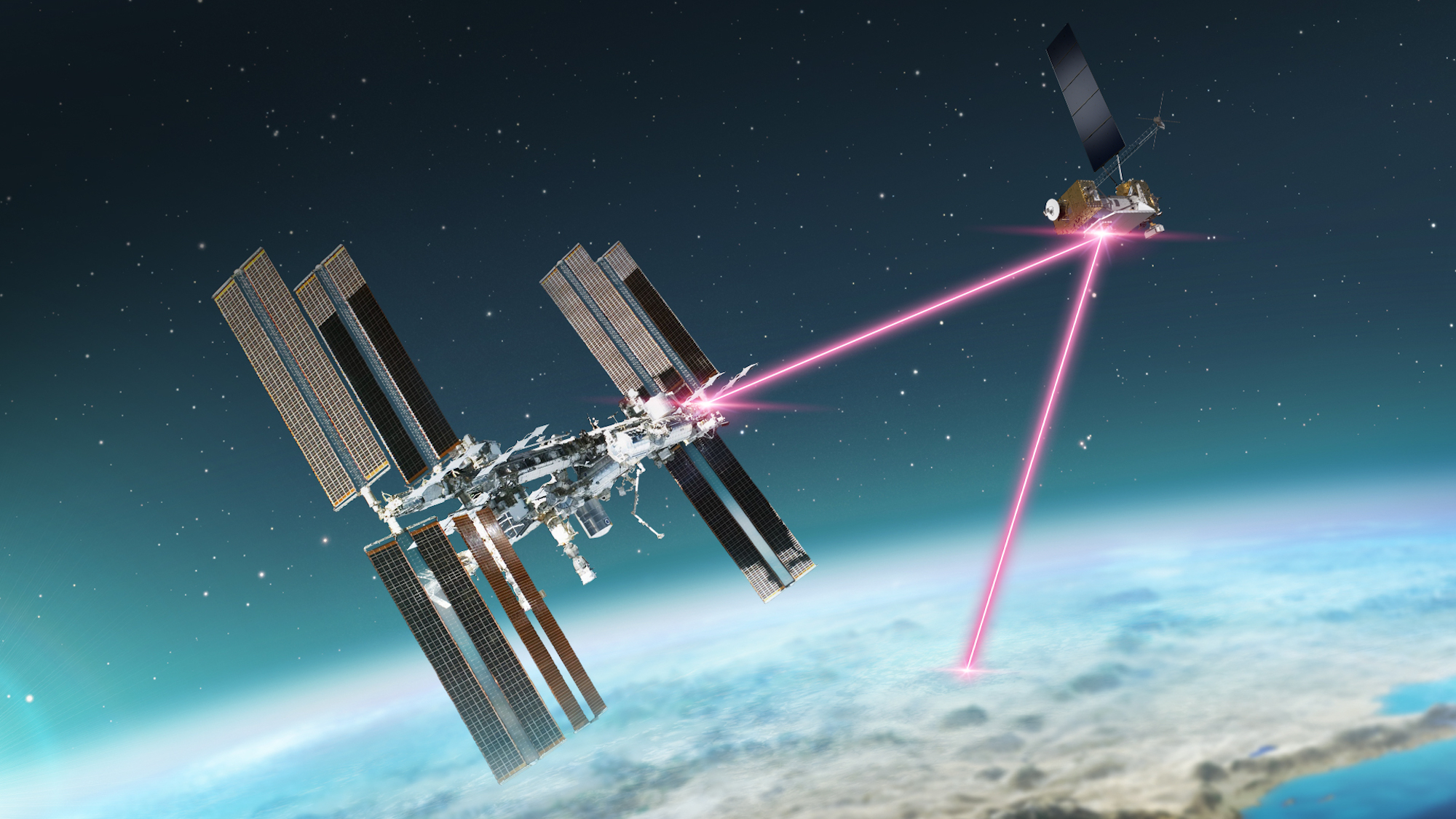

By year’s end, NASA will begin testing a fridge-sized laser communications upgrade aboard the International Space Station. It’s a major relay system demonstration for the ISS, and one which could chart a path forward for how humans communicate not just in low-orbit, but on the lunar surface and beyond.
Although radio has long served as both piloted and unpiloted missions’ primary communications method, as Space.com notes, laser communication arrays boast a number of benefits. From a purely logistical standpoint, the equipment is both cheaper and lighter-weight than radio devices. Meanwhile, lasers’ shorter wavelengths ensure far more information can be transferred at one time compared to radio waves.
Once launched aboard a forthcoming SpaceX commercial resupply services mission, NASA’s Integrated LCRD Low Earth Orbit User Modem and Amplifier Terminal (ILLUMA-T) will work alongside the agency’s Laser Communications Relay Demonstration (LCRD) launched in December 2021. ILLUMA-T will use infrared light to send and receive laser communications at a higher data rate than previously available. Once installed, these transmissions’ higher rates will allow for more videos and images to transmit back to Earth, all at around 1.2 gigabits-per-second—comparable to a solid internet connection here on Earth.
[Related: NASA is testing space lasers to shoot data back to Earth.]
“Laser communications offer missions more flexibility and an expedited way to get data back from space,” said Badri Younes, former deputy associate administrator for NASA’s Space Communications and Navigation (SCaN) program. “We are integrating this technology on demonstrations near Earth, at the Moon, and in deep space.”
After installation, ILLUMA-T will first beam data to-and-from the LCRD satellite hovering 22,000 miles above Earth in geosynchronous orbit. Meanwhile, the LCRD will transmit data back to Earth at two stations in California and Hawaii—spots chosen for their comparatively low cloud cover, which often impedes laser transmissions.
“ILLUMA-T is not the first mission to test laser communications in space but brings NASA closer to operational infusion of the technology,” NASA wrote in a recent statement, In 2022, a small CubeSat in low Earth orbit began testing laser communications as part of the TeraByte InfraRed Delivery System. Before that, the Lunar Laser Communications Demonstration also transferred data to-and-from lunar orbit during 2014’s Lunar Atmosphere and Dust Environment Explorer mission. Still, NASA explains that all of these tests combined will further help advance aerospace communications between Earth, the moon, Mars, and beyond.
